#Vaucluse department
Explore tagged Tumblr posts
Text

Vaison-la-Romaine, France: Vaison-la-Romaine is a town in the Vaucluse department in the Provence-Alpes-Côte d'Azur region in southeastern France. Vaison-la-Romaine is famous for its rich Roman ruins and mediaeval town and cathedral. Wikipedia
252 notes
·
View notes
Text

Provençal Colorado, Rustrel, France: In Vaucluse, 2 kilometres south-east of the village of Rustrel, superb landscapes reveal a palette of extraordinary colours. This place is known as the Provençal Colorado. Rustrel is a commune in the Vaucluse department in the Provence-Alpes-Côte d'Azur region of Southeastern France. In 2017, it had a population of 688. Wikipedia
116 notes
·
View notes
Text
Brazil's Pantanal, a treasure trove of biodiversity, has already fallen prey to flames
Thousands of fires have broken out since the beginning of the year in this important wetland area in west-central Brazil. NGOs and authorities fear that the dry season, which has only just begun, could lead to even bigger fires than in 2020.

The respite was short-lived. Devastated by massive fires in 2020, the Pantanal is once again ravaged by flames. According to Brazil's National Institute for Space Research, the area has seen more than 2,500 fires since the start of 2024, a catastrophic 1,776% increase on the same period in 2023, just as the dry season is beginning.
At least 372,000 hectares (equivalent to the size of the French department of Vaucluse) have already been destroyed by the flames, mainly in Mato Grosso do Sul, one of the two regions, along with Mato Grosso, that are home to this fragile ecosystem. The Pantanal, the largest wetland on the planet and a paradise for jaguars and caimans, extends over 200,000 square kilometers in South America, three-quarters of it in Brazil.
Images from the region show firefighters battling the blaze. Almost all the fires are on private property which is more difficult for the Prevfogo brigades deployed by the environmental police to access than public land. In this swampy area, travel is difficult. It can take up to seven hours to reach the areas most affected by the fires.
The devastation is all the more worrying as it affects a Pantanal that is in the process of recovery. In 2020, fires on an unprecedented scale claimed the lives of 17 million vertebrates and consumed 40,000 square kilometers of vegetation – a quarter of the ecosystem. In addition, it strikes a Brazil stunned by the proliferation of all kinds of natural disasters on its soil, from record heat waves in Rio de Janeiro to drought in the Amazon and deadly floods in Rio Grande do Sul, which have already claimed 177 lives.
Continue reading.
#brazil#brazilian politics#politics#environmentalism#pantanal#cw animal death#mod nise da silveira#image description in alt
24 notes
·
View notes
Text
Wednesday 8th January 2025
Vaucluse
Balgowlah continues to be swept by a gale and looked threatening outside, although still quite warm. That's the odd thing about the weather in this country. Travelling into Sydney yesterday on the bus, despite the proof of intent to rain, people did not wear coats or jackets. They may not even own one. We, on the other hand, were covered in protective rainwear and warm as a result but looked very English, so I think our cover is blown.
Anyway, while we were to be out today, the roofer was here to take a very close interest in the roof above our bedroom, and in the meantime, the dehumidifier continues to hum.
Our excursion today was to follow in the tracks of William Charles Wentworth deceased, who from 1827 lived at Vaucluse House near Watson Bay. Having been inspired by the life and accomplishments of this 19th century man, we were pleased to find that he lived within easy reach of us here. We caught a ferry from Manly to Watson Bay and then a 325 right to the entrance of the house.
A cottage had been constructed in 1809 on a 32 acre site within sight of the southern shore of Sydney Harbour by the previous incumbent, an Irishman, Sir Henry Browne Hayes; a convict. It was apparent that despite title, Henry was not a very nice sort, and was a disgrace to his ermine, which was the reason he found himself in Sydney. He was transported in 1802 because he had kidnapped the daughter of a wealthy Irish banker! In 1812, he left the colony and returned to Ireland, but not before he had carried out a fair bit of landscaping on the estate and purchasing even more land. Some say he had brought in from Ireland a lot of the emerald isle grass to surround his little cottage to keep the snakes out, apparently. After he had left, the property had a few owners before our man acquired it and set about extensive improvements.
It was interesting to experience the presentation of this sort of property as a preserved stately home and make comparisons with the methodology of our own National Trust. The house, as it presents today, is Georgian in its symmetry, but also in gothic revival style. Very English country house architecturally overall, and filled with heavy Victorian furniture. The Wentworths found themselves in an extremely complex web of social difficulties. William was born illegitimate; a product of a father with aristocratic birth and a mother transported as a criminal. William, now with a corrected birth certificate showing his father's surname, then makes the same societal mistake by marrying Sarah, a daughter of transported convicts. William, now coming into prominence, finds his wife is not able to move freely in the world he inhabits. It appears that all the Jane Austen palaver is alive and well in the colonies, too. People shunned her company and would only consider her daughters as marriage material if she kept out of the way. Sarah must have been a remarkable woman! She was quite remarkable in the decorating department because it was she who was responsible for much of the development of Vaucluse House and, therefore, it's social standing in the vicinity.
All the while that we explored this interesting building, the heavens continued to drain their contents. When it decides to rain in Australia, it does a pretty thorough job. The rain has been falling pretty much continuously for 36 hours now. The plunge pool is about to overflow, and the roofer must be feeling like King Canute. We had intended making our way from Vaucluse to the mausoleum where our William now resides. It was only a few hundred metres from the house, but such was the velocity of the rain, we turned back in favour of the 325 bus stop and our return journey to Wynyard Station. We shall return on a future trip to complete this pilgrimage.
Settled by now into our seat on the bus, dripping profoundly into the upholstery, our thoughts were mulling over the Wentworth history, when there was a distinct and unwelcome whirring sort of noise from the bowels of the engine department. We stopped at a convenient place for the driver to think of the consequences of such a noise, and then he announced that we must all get off immediately. But where are we? we asked. Kings Cross, he said. Is there a train nearby? Oh, they are everywhere, he said. Well we could see we wouldn't get much further with this conversation, so we set off into the unknown. Well, there was a train, and after a couple of changes, and getting even more wet, we ended up back at Wynyard and catching the 173x home.
It's been quite a day. I think we deserve our Coopers, and perhaps some SB.
ps. We met a New Yorker today who made light of the rain saying you English must be used to this sort of thing. Get out there and enjoy it. After all, you must all be issued with an umbrella when you are born.








2 notes
·
View notes
Text


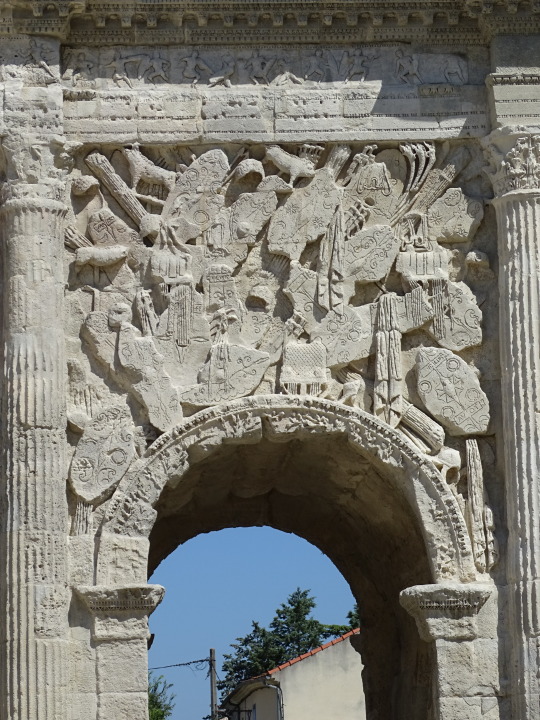
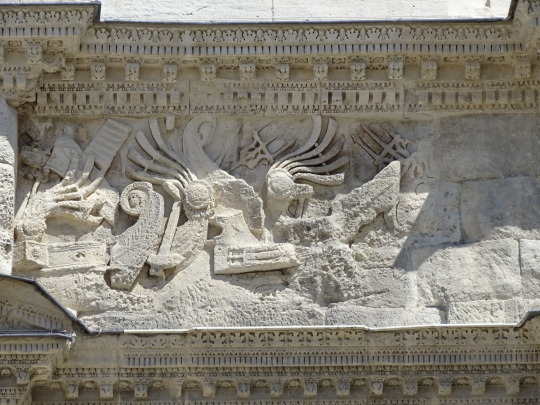


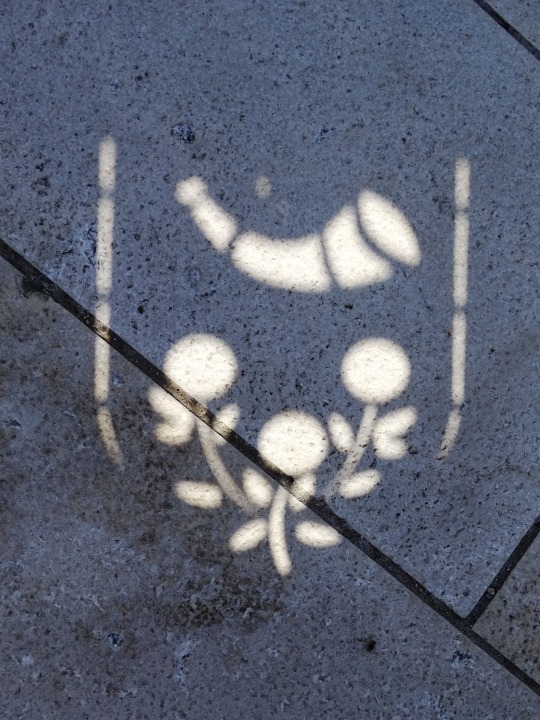
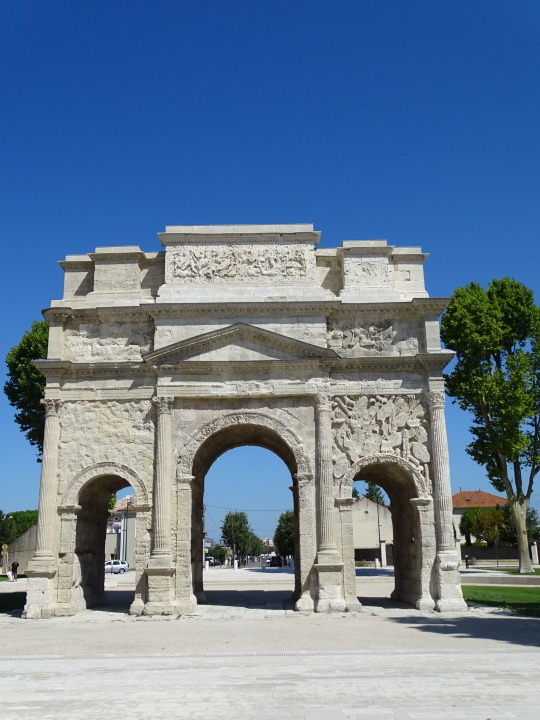

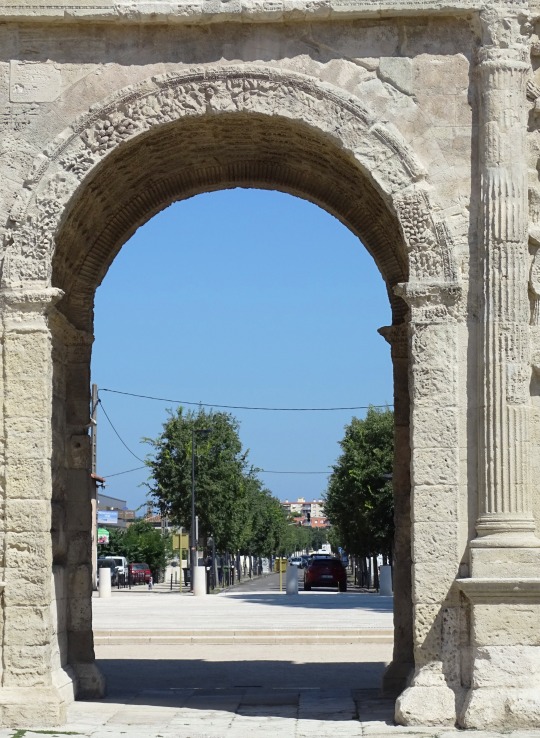
Triumphal Arch of Orange, France (No. 1)
Orange is a commune in the Vaucluse department in the Provence-Alpes-Côte d'Azur region in Southeastern France. It is about 21 km (13 mi) north of Avignon, on the departmental border with Gard, which follows the Rhône and also constitutes the regional border with Occitania. Orange is the second-most populated city in Vaucluse, after Avignon. In 2019, it had a population of 28,772.
The settlement is attested as Arausio and Arausion in the first and second centuries AD, then as civitas Arausione in the fourth century, civitas Arausicae in 517 (via a Germanized form *Arausinga), Aurengia civitatis in 1136, and as Orenga in 1205.
The name Arausio can be explained as the Gaulish ar-aus(i)o- ('temple, cheek'), itself derived from an earlier Proto-Celtic *far-aws(y)o-, which literally means 'in front of the ear'. It is cognate with the name of other ancient settlements, including Arausa, Arausia, Arausona (Dalmatia) and the nearby Oraison (Alpes-de-Haute-Provence).
Roman Orange was founded in 35 BC by veterans of the second legion as Arausio (after the local Celtic water god), or Colonia Julia Firma Secundanorum Arausio in full, "the Julian colony of Arausio established by the soldiers of the second legion." The name was originally unrelated to that of the orange fruit, but was later conflated with it.
Source: Wikipedia
#Orange#Provence-Alpes-Côte d'Azur#Vaucluse#Carpentras#travel#original photography#vacation#tourist attraction#landmark#cityscape#architecture#summer 2021#France#Europe#Triumphal Arch of Orange#Arc de triomphe d'Orange#UNESCO World Heritage List#French history#Roman history#seal
7 notes
·
View notes
Text

“I felt inspired to share this image in particular. This is one of the most inspirational Cistercian Abbeys functioning today - The monks who live here tend bees, sell honey and lavender products.
"Notre-Dame de Senanque is a Cistercian abbey near the village of Gordes in the department of the Vaucluse in Provence. The Senanque Abbey was founded in 1148 under the patronage of Alfant, bishop of Cavaillon, and Raymond Berenger II, Count of Provence, by Cistercian monks who came from Mazan Abbey in the Ardeche." Quote from their website:
https://www.avignon-et-provence.com/en/monuments/senanque-abbey”
- By Gretchen Cornwall
5 notes
·
View notes
Text
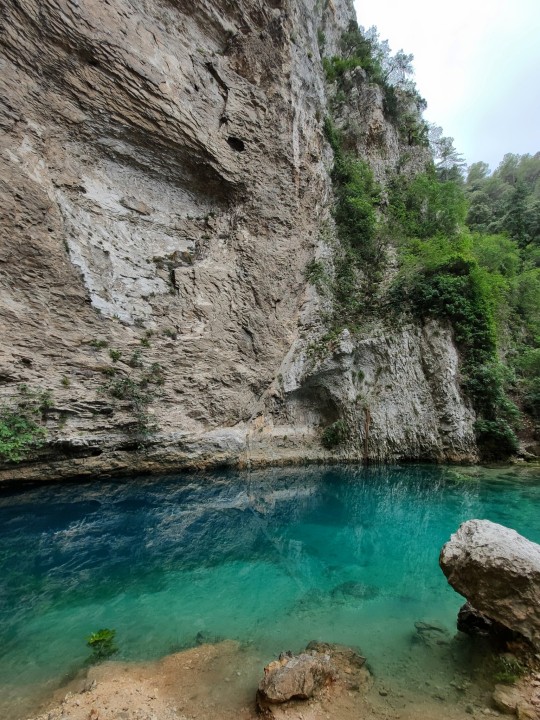
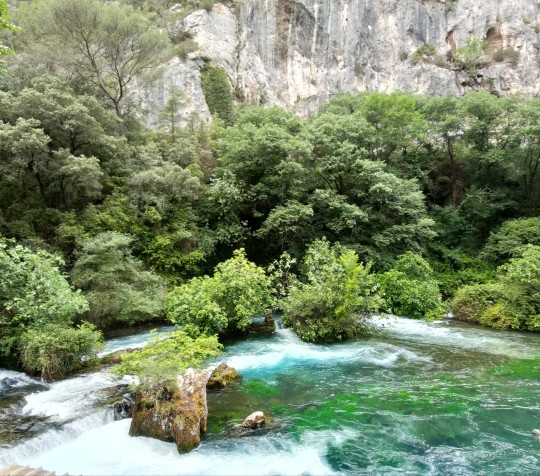


Fontaine De Vaucluse, Vaucluse department, France.
9 notes
·
View notes
Text















Provence hotel Le Moulin de Lourmarin revives an 18th-century mill. A serene village retreat with modern Provençal interiors.
Pastis-sipping guests relax under shady trees and watch games of petanque being played at new French hotel Le Moulin, which mixes modern and authentic Provençal styles.
Rising French studio Jaune created the interiors of the 25-room Lourmarin hotel, which revives an 18th-century oil mill at the foot of the Luberon hills in Provence’s Vaucluse department. The practice used local hues, materials, artisan-made pieces, and the rustic, rural vibe of Provençal living at the Beaumier-owned boutique hotel.
The sun-dappled ‘village hotel’ has a sweeping, stone foyer staircase with wrought metal detailing, lime plaster walls, dried flower displays, handcrafted earthenware, including glazed tiles made in Millau by Terres Cuites de Raujolles, and a palette of pale hues, sisal yellow and ochre red, which are inspired by colours found in the earth locally. The Luberon has an abundance of ochre deposits that were once quarried extensively.
In the hotel rooms, there are wall-mounted sisal headboards, woven straw lounge chairs from Midi Editions, and wall niches with clean, simple shapes. Painted window shutters frame small windows, and dark orange cupboard curtains feel classically French. They sit beside contemporary pottery pieces and framed paintings, paperbacks and objet d’art curated by studio Be-poles and displayed on walls, windowsills and recesses. Along with a tall, curved glass window and a barrel-vaulted ceiling, Le Moulin’s bistro has looping bamboo chandeliers suspended above tiled tables and beige banquettes, and the original inside workings of the mill on display. Here, diners devour dishes such as Camargue clams marinated in white wine and honey from the Luberon region with Provençal herbs and mangetout. After dinner, they can retire to the elegant drinks bar, which features rich wood and a wall-hung display of straw hats.
By The Spaces
0 notes
Text
#donald trump#artists on tumblr#across the spiderverse#michael cera#margot robbie#ryan gosling#barbie#rwby
1 note
·
View note
Text
Exploring the Charming Village of Saint Didier in the Provence
Nestled in the heart of the picturesque Provence region in France, the village of Saint Didier is a hidden gem waiting to be discovered. With its charming streets, stunning architecture, and rich history, this small village offers a truly authentic Provençal experience. Join us as we take a closer look at the wonders of Saint Didier. Saint Didier is located in the Vaucluse department of…

View On WordPress
#best designed location#best locations#Design and travel guide#designandtravelguide#france#living in style#livinginstyle#provence#saint didier#travel in style
0 notes
Note
4 and 13 for the ask game!
4. Favourite drink?
Coca Cola Light (or Zero). I'm addicted. I drink it every day, and I know I shouldn't. It's just so good.
Alcoholic drink (though I rarely drink alcohol): Piña Colada. Yummy.
13. Your dream place to visit?
I absolutely adore the French Department of the Vaucluse. It's where I pretty much spent all of my childhood vacations with my family, more precisely in or around Bedoin and the Mont Ventoux. I still go back there every so often. It holds my heart. It's like coming home, to be honest.
I have a tattoo on my back that includes a lavender branch and the Mont Ventoux, as a tribute to my family and especially my late father.
1 note
·
View note
Text

Palais des Papes, Avignon, France: The Palais des Papes is a historical palace located in Avignon, Southern France. It is one of the largest and most important medieval Gothic buildings in Europe. Once a fortress and palace, the papal residence was a seat of Western Christianity during the 14th century. Wikipedia
138 notes
·
View notes
Text
Le Traité de Tolentino : Avignon et le Comtat Venaissin entièrement français

Après la réunion à la France d'Avignon et du Comtat Venaissin en 1791, résultat d’un référendum soumis aux habitants, le Pape a toutefois conservé une autorité spirituelle et religieuse sur ces territoires, mais il a perdu son autorité temporelle et politique.
Avant la Révolution française, Avignon et le Comtat Venaissin étaient des territoires sous la souveraineté du Pape, faisant partie des États pontificaux. Le Pape exerçait à la fois une autorité spirituelle en tant que chef de l'Église catholique et une autorité temporelle en tant que souverain temporel sur ces territoires.
Cependant, avec l'annexion de ces territoires par la France révolutionnaire en 1791, le Pape a perdu son autorité politique et administrative sur Avignon et le Comtat Venaissin. Ces territoires sont devenus des départements français et ont été soumis à l'autorité du gouvernement révolutionnaire français.
Le département de Vaucluse, le 89e département français, ne sera pourtant formé que quelques années plus tard, le 25 juin 1793.
Le Traité de Tolentino a été un accord signé entre la France et le Saint-Siège (le Vatican) le 19 février 1797, à Tolentino en Italie, durant les guerres de la Révolution française. Ce traité a été un événement significatif dans le cadre des conflits entre la France révolutionnaire et les États italiens, notamment les États pontificaux dirigés par le pape Pie VI.
Le traité de Tolentino fut négocié à la suite des succès militaires français en Italie, menés en grande partie par le général Bonaparte. Les forces françaises avaient remporté plusieurs victoires décisives, affaiblissant ainsi considérablement les États pontificaux.
Les termes du traité étaient très défavorables pour le Vatican. Entre autres dispositions, le Saint-Siège a dû céder plusieurs territoires au nord de l'Italie à la France, dont Avignon, ainsi que des œuvres d'art précieuses, y compris des peintures, des sculptures et des manuscrits, en guise de compensation pour les frais de guerre.
L’article 6 du traité dispose que « Le Pape renonce purement et simplement à tous les droits qu’il pourrait prétendre sur les villes et territoire d’Avignon, le comtat Vénaissin et ses dépendances, et transporte, cède et abandonne lesdits droits à la république française. »
Le traité de Tolentino a eu des conséquences majeures pour le Vatican et pour l'Italie. Il a marqué un affaiblissement significatif du pouvoir temporel du pape, réduisant considérablement les territoires sous son contrôle direct.
Pour la France, le traité de Tolentino a renforcé sa position en Italie et a contribué à l'expansion territoriale de la République française dans la région. Il a également symbolisé la montée en puissance de la France révolutionnaire sur la scène européenne, illustrant sa capacité à imposer ses volontés aux États traditionnels.
Par ses victoires militaires éclatantes, le rôle de Bonaparte sur les champs de bataille a été crucial dans la création de cette situation.
***
After the annexation of Avignon and the Comtat Venaissin to France in 1791, as a result of a referendum submitted to the inhabitants, the Pope nevertheless retained spiritual and religious authority over these territories, but lost his temporal and political authority. Before the French Revolution, Avignon and the Comtat Venaissin were territories under the sovereignty of the Pope, part of the Papal States. The Pope exercised both spiritual authority as the head of the Catholic Church and temporal authority as the sovereign ruler over these territories. However, with the annexation of these territories by revolutionary France in 1791, the Pope lost his political and administrative authority over Avignon and the Comtat Venaissin. These territories became French departments and were subjected to the authority of the French revolutionary government. The department of Vaucluse, the 89th French department, was only formed a few years later, on June 25, 1793.
The Treaty of Tolentino was an agreement signed between France and the Holy See (the Vatican) on February 19, 1797, in Tolentino, Italy, during the French Revolutionary Wars. This treaty was a significant event in the conflicts between revolutionary France and the Italian states, notably the Papal States led by Pope Pius VI. The Treaty of Tolentino was negotiated following French military successes in Italy, largely led by General Bonaparte. French forces had achieved several decisive victories, significantly weakening the Papal States.
The terms of the treaty were highly unfavorable to the Vatican. Among other provisions, the Holy See had to cede several territories in northern Italy to France, including Avignon, as well as valuable works of art, including paintings, sculptures, and manuscripts, as compensation for the costs of war. Article VI of the treaty stated that "The Pope purely and simply renounces all rights that he might claim over the cities and territory of Avignon, the Comtat Venaissin and its dependencies, and transfers, cedes and abandons said rights to the French Republic."
The Treaty of Tolentino had significant consequences for the Vatican and Italy. It marked a significant weakening of the Pope's temporal power, reducing the territories under his direct control. For France, the Treaty of Tolentino strengthened its position in Italy and contributed to the territorial expansion of the French Republic in the region. It also symbolized the rise of revolutionary France on the European stage, demonstrating its ability to impose its will on traditional states. Through his brilliant military victories, the role of Bonaparte on the battlefield was crucial in creating this situation.
#bonaparte#france#napoleon#napoleon bonaparte#Révolution#Révolution française#République#République française#Tolentino#Pape#Saint-Siège#Avignon#Vaucluse#Comtat Venaissin#Révolutionnaire
1 note
·
View note
Text
Bonnieux is in the Vaucluse department in the Provence-Alpes-Côte d'Azur region in Southeastern France. It's about 25-30 km north of Aix-en-Provence.

Ruelle de Bonnieux…
145 notes
·
View notes
Text
News from Marseille, France, 10 July.
Marseille is experiencing a heatwave with temperatures reaching up to 32°C, requiring precautions such as staying hydrated and using sunscreen.
Météo France has placed three departments in the Paca region (Alpes-de-Haute-Provence, Alpes-Maritimes, and Var) on orange heatwave alert, while Bouches-du-Rhône and Vaucluse are on yellow alert.
2. Two-year-old Emile disappeared from his grandparents' house in a village in the Alpes-de-Haute-Provence, and extensive search efforts are underway.
Concerns have been raised about the presence of wolves in the area, as volunteers fear that Emile may have fallen asleep and become vulnerable to them.
The search operation involves over 300 volunteers, including specialized mountain rescue teams, and the investigation is ongoing with all possible leads being explored.
3. A man was shot and killed in Hyères, Var, and three suspects were arrested in La Garde.
The prosecutor of Toulon stated that the investigation is currently focused on voluntary manslaughter by organized gang and that the suspects were found in possession of firearms.
The police will be working to unravel the complex sequence of events surrounding the crime.
4. The French government is providing support to businesses affected by recent riots in Marseille, including the possibility of canceling charges and implementing partial unemployment measures.
The Minister of Economy is calling for solidarity and understanding from insurers to expedite the claims process and reduce franchise amounts for small independent businesses.
Local institutions have allocated financial aid of up to 12 million euros to assist affected businesses, with the government urging a collective effort from insurers, banks, and local authorities to fully compensate for the damages.
5. The Aix-Marseille-Provence Metropolis is launching a new carpooling service called "Lecovoiturage" to encourage residents to use carpooling instead of driving alone.
The service will be operated in partnership with Karos, a specialized company with over 380,000 users in France, and will focus on the home-to-work commute.
The initiative will offer financial incentives for drivers who share their vehicle and a low fare of 0.50 euro per trip for passengers, with free carpooling for RTM subscribers.
6. The program "1,2,3, Nagez !" aims to provide free swimming lessons to children in underserved areas of France, with the goal of teaching over 20,000 children to swim this summer.
The program is supported by various partners, including Paris 2024, the National Sports Agency, the French Swimming Federation, EDF, the Department of Seine-Saint-Denis, and the city of Marseille.
7. There was concern among some residents and officials in Marseille that the exterior of the Vélodrome stadium would be labeled "Paris-2024" for the upcoming Olympic Games, but the organizing committee has assured that it is not mandatory.
The mayor's deputy, Samia Ghali, expressed that it would be poorly received by the people of Marseille to have "Paris" displayed on their iconic football stadium.
The organizing committee has stated that while the Vélodrome will be decorated in the Olympic look, they are open to adapting the design and ensuring the stadium remains personalized for the city.
#MarseilleHeatwave#TrafficControl#InfrastructureImprovements#MissingChild#WolfConcerns#CrimeNews#RiotSupport#CarpoolingService#SwimmingLessons#VelodromeControversy
0 notes
Text










Triumphal Arch of Orange, France (No. 4)
The Ancient Arch of Orange or, commonly known as the Triumphal Arch of Orange is a monumental Roman arch from the early 7th century, which marks the northern entrance to Arausio (now Orange, in the French department of Vaucluse) on the Via Agrippa (the national road <> before its decommissioning).
The Arch of Orange was inscribed on the first list of historical monuments (1840) and has been on the World Heritage List in Europe since 1981.
The arch was probably erected between the years 20 and 25, to commemorate the victories of Germanicus, who died in 19, and possibly "returned" to Tiberius in 26/27, according to the interpretation given to the dedication added on that date on both sides of the monument.
In the Middle Ages, the monument was fortified to serve as an advanced bastion at the entrance to the city.
During the nineteenth century, an engraving by J. Carter after Thomas Allom depicted a guillotine placed under the Arch of Titus during the Reign of Terror (French Revolution) (1793-1794). The veracity of this location is questioned (see the July 2017 special issue of Orange Vérités, page 12, beginning of the second paragraph).
Source: Wikipedia
#Orange#Provence-Alpes-Côte d'Azur#Vaucluse#Carpentras#travel#original photography#vacation#tourist attraction#landmark#cityscape#architecture#summer 2021#France#Europe#Triumphal Arch of Orange#Arc de triomphe d'Orange#UNESCO World Heritage List#French history#Roman history#tree#Southeastern France
2 notes
·
View notes